Police forces across the United Kingdom have been astounded by the huge rise in excessive speeding and other dangerous behaviors on the roads during the COVID-19 pandemic.
When lockdown was first imposed by Prime Minister Boris Johnson on the evening of March 23, 2020, UK road safety professionals were hopeful that the sudden restriction on travel would significantly reduce speeding, drug-impaired driving, and other reckless roadway activities.
But while traffic dramatically reduced overnight, alarmingly, the number of drivers speeding excessively increased. It appeared that some of the people still using the roads saw the quiet streets as an opportunity to disregard the speed limit. Most drivers obeyed traffic laws, but a select minority appeared to believe that the speed limits no longer applied during such unprecedented times.
Greater London’s roads, renowned for their congestion, were suddenly clear, a scenario that some took advantage of by speeding. Within days of lockdown, the Metropolitan Police detected a vehicle traveling at 140 mph in a 70 mph zone on the A3 and another traveling at 134 mph in a 40 mph zone on the A10. Soon after, another vehicle was detected traveling at 163 mph on the M1 motorway. This was followed by similar high-speed offenses across the UK road network.
Many offenses not only occurred on dual carriageways and motorways, but on built-up, residential streets. In Lancashire, in the northwest of England, a car was detected at 100 mph in a 30 mph zone.
Police forces began reminding drivers to use the roads only if it was essential and that driving safely was more critical than ever in order to ease the burden on the already overstretched National Health Service (NHS).
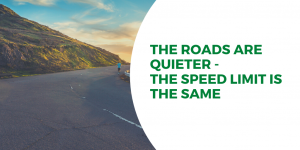
The police took to social media, highlighting the many dangerously high speeds that had been detected by roadway policing officers and speed cameras and desperately urged drivers to slow down. But despite this campaign, the offending continued.
In May, two videos purportedly showing two of the highest speeds ever recorded on UK roads, were posted online, just days apart. The first video showed a driver filming himself at 201 mph in an Audi RS6 on the M23 in Sussex. The second, uploaded just days later, showed a separate Audi driver exceeding 200 mph on the M20 in Kent.
At the start of lockdown, many forces stopped enforcement with their mobile speed cameras, but within weeks, many had no choice but to return to the streets in response to the rise in high-speed offenses. In June, the National Police Chiefs’ Council (NPCC) launched the #SlowDownSaveLives campaign in response to the dramatic increase in speeding vehicles that had been detected on UK roads.1
London Plagued by “Extreme Speeders”
Detective Superintendent Andy Cox heads up road and transport policing at the Metropolitan (Met) Police Service, in London, and is the force lead for Vision Zero, which aims to eliminate all deaths and serious injuries on the city’s transport system.
 With more than 44,000 officers and staff, the Met is the United Kingdom’s largest police service.
With more than 44,000 officers and staff, the Met is the United Kingdom’s largest police service.
Det. Supt. Cox has become a champion for road safety, with a particular focus on speed, which is the single largest factor in collisions on London roads. Since the coronavirus outbreak, his anti-speeding campaign has really gained momentum, and he has become the unofficial spokesperson on the issue in the United Kingdom.
His term “extreme speeders,” coined for those traveling above the fixed penalty notice threshold, has recently been adopted by the media.
His passionate and determined approach really stands out on Twitter, where he posts several hard-hitting messages each day from his own professional account. In the United Kingdom, it is unusual for such a high-ranking officer to be so prominent on social media. His round-the-clock Tweets highlight extreme motoring offenses and enforcement figures and inform his followers when offenders are brought to justice. The Met Police has developed a system of fast-tracking extreme speeders through the court system, so that members of the public can see that justice has been done in a timely fashion.
During the pandemic lockdown, extreme speeding enforcement by traffic police increased by 220 percent in Greater London, compared to the same period in 2019. Between March 24 and June 2, 2020, the Met Police detected 8,740 offenses, compared to 3,306 for the same period in 2019.2
Detective Superintendent Cox said,
The message detailing speeding as a risk to life with knock-on impacts to the NHS and COVID-19 patients has resonated with the public. We need to utilise this opportunity to amplify the deterrent effect through hard-hitting public communications.
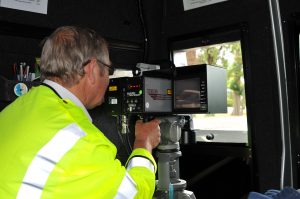 For instance, drink driving is rightly seen as socially unacceptable and people will do all they can to stop the drunk driver taking to the road. Currently, speeding is not socially unacceptable and speeding drivers go unchecked. We need to change this.
For instance, drink driving is rightly seen as socially unacceptable and people will do all they can to stop the drunk driver taking to the road. Currently, speeding is not socially unacceptable and speeding drivers go unchecked. We need to change this.
The public must challenge their family, friends and themselves not to speed and, by making speeding socially unacceptable, influence genuine change in driving behaviour and standards.3
Detective Superintendent Cox is also keen to ensure that extreme speeders are appropriately sentenced to reflect the severity of the offense and the risks posed to road users when they choose to drive recklessly on the roads.
The criminal justice system needs to recognise the risk that they pose and the risk of that behaviour to life and to somebody’s permanent disability.
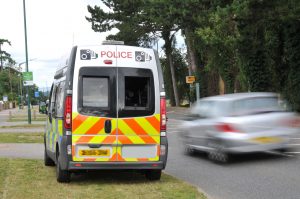 I’m going to try to draw some comparisons there for the legislators to say: “Look, somebody takes a knife to the street, somebody takes a speeding vehicle at 160 mph on the street—both are equally horrendous. The 160 mph driver has the ability to leave absolute destruction left behind them.
I’m going to try to draw some comparisons there for the legislators to say: “Look, somebody takes a knife to the street, somebody takes a speeding vehicle at 160 mph on the street—both are equally horrendous. The 160 mph driver has the ability to leave absolute destruction left behind them.
We sentence strongly if somebody dies or is seriously injured in a speed-related collision, but we don’t sentence very strongly if they speed and nothing happens.
If you carry a knife onto the street you might not harm anybody with that knife but you’re going to get sentenced quite strongly.
What I’d like to see is that link to risk.4
COVID-19 No Bar to Drugged Drivers
The roads have not just been blighted by extreme speeders during the COVID-19 pandemic. In Essex, a county adjoining London, the police force experienced its highest ever number of drug-impaired driving arrests in May. Officers from Essex Police made a record 331 arrests—an increase of more than 25 percent on the previous record set a month earlier in April.5
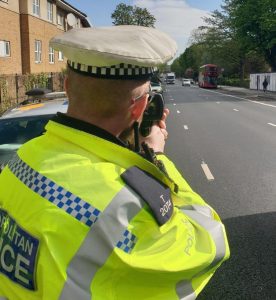 So far in 2020, the force has made 1,049 drugged driving arrests—more than those made during the whole of 2018 and already more than half the number for the whole of 2019. In May, the force also seized its highest ever number of vehicles—432.6
So far in 2020, the force has made 1,049 drugged driving arrests—more than those made during the whole of 2018 and already more than half the number for the whole of 2019. In May, the force also seized its highest ever number of vehicles—432.6
Adam Pipe, head of Roads Policing at Essex Police, said the huge rise in these offenses during COVID-19 had really taken the force by surprise. He said the demand on his roads policing officers initially dropped when the UK lockdown began, giving them more time to investigate potential offenses and use their “roads policing noses.”
The officers identified vehicles and individuals of concern through a combination of automatic numberplate recognition (ANPR) cameras, information provided to the Crimestoppers charity, and investigating “vehicles of interest.”
The Safer Essex Roads Partnership, made up of organizations including Essex Police, local authorities, Essex Fire and Rescue Service, and the East of England NHS Trust, has a full-time road safety analyst who has access to all police systems and road casualty data for the county. The data dictate all enforcement, communications, and educational activities carried out by the partnership.
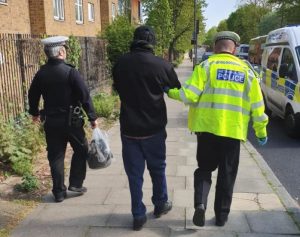 Research carried out by the partnership during lockdown has confirmed, for the first time, the link between road crime and wider criminality. The force examined 750 drugged driving arrests that were made in Essex in 2020. Of these offenders, 271 (36 percent) had one or more previous arrests for a criminal offense. Between them, this comprised 4,619 previous criminal offenses. The most common criminal offenses recorded for the group included drugs, burglary, theft, and violence.7
Research carried out by the partnership during lockdown has confirmed, for the first time, the link between road crime and wider criminality. The force examined 750 drugged driving arrests that were made in Essex in 2020. Of these offenders, 271 (36 percent) had one or more previous arrests for a criminal offense. Between them, this comprised 4,619 previous criminal offenses. The most common criminal offenses recorded for the group included drugs, burglary, theft, and violence.7
Mr. Pipe said, “This proves that effective roads policing will have a positive impact on other crimes. If we stop a drug driver, we then have the opportunity to disrupt other criminal behavior, such as violence, which is a top priority in Essex.”8
Conclusion
A link can be drawn between the coronavirus pandemic and the horrifying annual death toll on the world’s roads. Approximately 1.35 million people die each year as a result of road traffic crashes and between 20 and 50 million more people suffer non-fatal injuries, with many incurring a disability as a result of their injury.9
Yet, for too long, there has been a strong sense of complacency in society around road deaths. They are widely accepted as unavoidable.
But these deaths can be avoided. And they need to be seen for what they are—a pandemic that, like COVID-19, needs to be tackled head-on. As well as hundreds of thousands of deaths worldwide, COVID-19 has also led to excessive speeding and an increase in drug-impaired driving and other dangerous behavior on our roads.
However, it has also led to a shift in people’s behavior as shown by many taking responsibility for their own actions in order to protect themselves and others around them.
The UK public were urged by the government to help reduce the spread of COVID-19, first by “staying at home to save lives” and then, more recently, by “staying alert” and using their own common sense to prevent the spread of the disease.
Police and road safety advocates need to tune into this new sense of responsibility that many people have developed and urge community members to take responsibility for road safety and to actively reduce the number of deaths and injuries on our roads. To do this, police forces need to embrace the many marketing and communications tools available to them and use these hand-in-hand with their enforcement activities. They need to communicate together as one team.
Trevor Hall, managing director of the UK nonprofit Road Safety Support, sums up the need for this collaborative effort to engage the public in road safety: “Hopefully, we can look back at 2020 as a turning point when we learnt so much from one tragedy in order to help another. The point where drivers started to see speeding as the unacceptable, anti-social activity it is.”
Notes:
1 National Police Chiefs’ Council (NPCC), “Police Urge Motorists to ‘Slow Down, Save Lives,’” press release, May 18, 2020.
2 Metropolitan Police, internal data.
3 Andy Cox, “Delivering Vision Zero in London,” TransportXtra, April 23, 2020.
4 “Are Drivers Getting the Message to Slow Down? Interview with Det Supt Andy Cox,” Road Safety Support, video 8:30, May 4, 2020.
5 Essex Police, internal data.
6 “Record Number of Drug Drivers Arrested in Essex during Lockdown,” Road Safety Support, June 24, 2020; Essex Police, internal data.
7 “Record Number of Drug Drivers Arrested in Essex during Lockdown.”
8 “Record Number of Drug Drivers Arrested in Essex during Lockdown.”
9 World Health Organisation, “Road Traffic Injuries.”
Please cite as
Trevor Hall, “Viral Roadway Crimes: UK Road Safety Hard Hit during COVID-19 Pandemic,” Police Chief Online, September 16, 2020.



